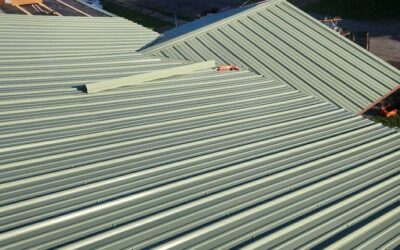iturn0image0turn0image1turn0image2turn0image8Certainly! Here’s a comprehensive SEO blog post on “A Design & Materials Guide for Residential Flat Roofing Systems”:
A Design & Materials Guide for Residential Flat Roofing Systems
Flat roofs are a common sight on commercial buildings, but they are increasingly making their way into residential architecture. Their sleek appearance, potential for additional living space, and modern aesthetic appeal to many homeowners. However, understanding the design and material options is crucial for ensuring durability and performance.
Flat Roofs Are Everywhere—But What About Homes?
Flat roofs are prevalent in urban landscapes, adorning malls, warehouses, and apartment complexes. Their simplicity and cost-effectiveness make them a go-to choice for commercial structures. In residential settings, flat roofs are gaining popularity, especially in modern and minimalist home designs. They offer a unique aesthetic and functional advantages that pitched roofs may not provide.
Why Are Flat Roofs Less Common for Houses?
Despite their benefits, flat roofs are less common in residential construction due to certain challenges:
- Drainage Concerns: Flat roofs have a minimal slope, making water drainage more challenging compared to pitched roofs.
- Maintenance Requirements: They may require more frequent inspections and maintenance to prevent leaks and water pooling.
- Climate Considerations: In areas with heavy snowfall or rainfall, flat roofs can be more susceptible to water damage if not properly designed.
However, with advancements in roofing materials and construction techniques, many of these concerns can be effectively addressed.
Flat Roof Drain Types
Effective drainage is vital for the longevity of a flat roof. Common drainage systems include:
- Interior Drains: Placed at low points of the roof, channeling water through pipes inside the building.
- Scuppers: Openings at the edge of the roof that allow water to drain off the sides.
- Gutters and Downspouts: Collect water from the roof edge and direct it away from the building’s foundation.
Proper design and installation of these systems are essential to prevent water accumulation and potential damage.
It Looks Good
Flat roofs offer a modern and streamlined appearance that complements contemporary architectural styles. They provide a clean silhouette and can enhance the overall aesthetic of a home. Additionally, they allow for creative design elements such as rooftop gardens or terraces, adding both beauty and functionality.
Flat Roof Space Is Usable Space
One of the significant advantages of flat roofs is the potential for additional usable space. Homeowners can transform their rooftops into:
- Rooftop Gardens: Creating green spaces for relaxation and environmental benefits.
- Terraces or Patios: Providing outdoor living areas with panoramic views.
- Solar Panel Installations: Offering an ideal surface for solar energy systems.
- HVAC Equipment Placement: Keeping mechanical systems out of sight and freeing up ground space.
These applications not only enhance the living experience but can also increase property value.
It Performs and Protects Well
Modern flat roofing systems are designed to be durable and weather-resistant. With proper materials and installation, they can effectively protect homes from the elements. Benefits include:
- Energy Efficiency: Some flat roofing materials offer reflective properties, reducing cooling costs.
- Ease of Maintenance: Flat roofs are generally easier to access for inspections and repairs.
- Longevity: High-quality materials and proper maintenance can extend the lifespan of a flat roof significantly.
Examining Flat Roof Myths—What Are the Drawbacks?
While flat roofs have many advantages, it’s essential to address common misconceptions:
- Myth: Flat roofs always leak.
Reality: With proper design, materials, and maintenance, flat roofs can be as watertight as pitched roofs. - Myth: Flat roofs are unsuitable for snowy regions.
Reality: Adequate structural support and drainage systems can make flat roofs viable in snow-prone areas.
Understanding these factors helps homeowners make informed decisions about flat roofing.
Parts of a Flat Roof
A typical flat roof consists of several layers:
- Structural Deck: The base layer, often made of wood or concrete, providing support.
- Vapor Barrier: Prevents moisture from entering the building.
- Insulation: Enhances energy efficiency by reducing heat transfer.
- Roof Membrane: The waterproof layer protecting against the elements.
- Surface Layer: May include gravel or reflective coatings for additional protection.
Each component plays a crucial role in the roof’s performance and durability.
Other Flat Roof Components
Additional elements that contribute to a flat roof’s functionality include:
- Flashing: Metal pieces that seal joints and edges to prevent water intrusion.
- Expansion Joints: Allow for movement due to temperature changes, reducing stress on the roof.
- Drains and Scuppers: Essential for effective water removal.
- Parapet Walls: Extend above the roof level, providing safety and aesthetic appeal.
Proper integration of these components ensures a well-functioning flat roof system.
Warm vs. Cold Roofs
The terms “warm” and “cold” refer to the placement of insulation:
- Warm Roof: Insulation is placed above the structural deck, keeping the entire roof structure warm. This design minimizes condensation risks and is common in modern construction.
- Cold Roof: Insulation is below the structural deck, leaving the deck exposed to external temperatures. This approach can lead to condensation issues if not properly ventilated.
Choosing the appropriate design depends on climate, building use, and other factors.
Flat Roof Designs for Houses
Several flat roof designs cater to residential applications:
- Built-Up Roofing (BUR): Consists of multiple layers of bitumen and reinforcing fabrics, topped with gravel or a reflective coating. Known for durability and longevity.
- Single-Ply Membranes: Includes materials like EPDM, TPO, and PVC. These are lightweight, flexible, and relatively easy to install.
- Modified Bitumen: Combines asphalt with modifiers for enhanced performance. Available in torch-applied, self-adhered, or cold-applied systems.
- Liquid-Applied Roofing: Involves applying a liquid coating that cures to form a seamless, waterproof membrane.
- Spray-On Roofing: Utilizes spray foam insulation topped with a protective coating, offering excellent insulation and waterproofing.
- Metal Roofing: Flat metal panels provide durability and a modern aesthetic, though they may require additional insulation.
Each design has its pros and cons, and selection should be based on specific project requirements.
Can You Have a Flat Roof with Shingles?
Traditional asphalt shingles are not suitable for flat roofs due to their reliance on gravity for water shedding. However, certain low-slope roofing systems are designed to mimic the appearance of shingles while providing the necessary waterproofing for flat applications. It’s essential to consult with a roofing professional to explore appropriate options.
How to Make a Flat Roof Last
To maximize the lifespan of a flat roof:
- Regular Inspections: Check for signs of damage or wear, especially after severe weather.
- Prompt Repairs: Address issues like cracks or ponding water immediately to prevent further damage.
- Proper Drainage Maintenance: Keep drains and gutters clear to ensure effective water removal.
- Professional Maintenance: Schedule periodic professional assessments to catch potential problems
 (440) 307-2060
(440) 307-2060

